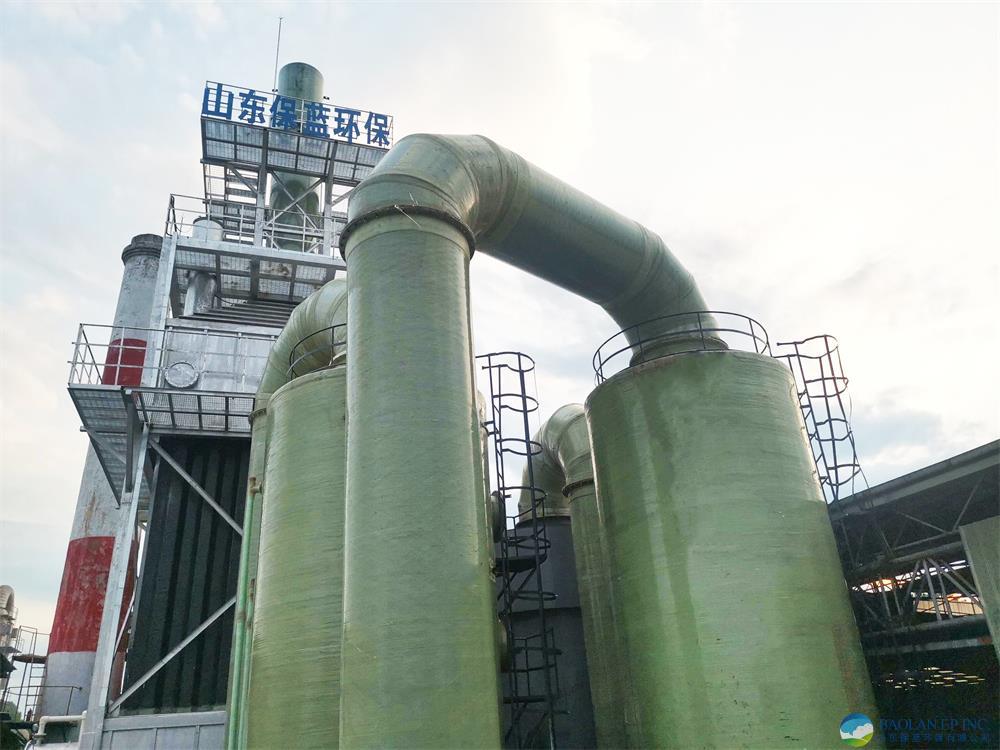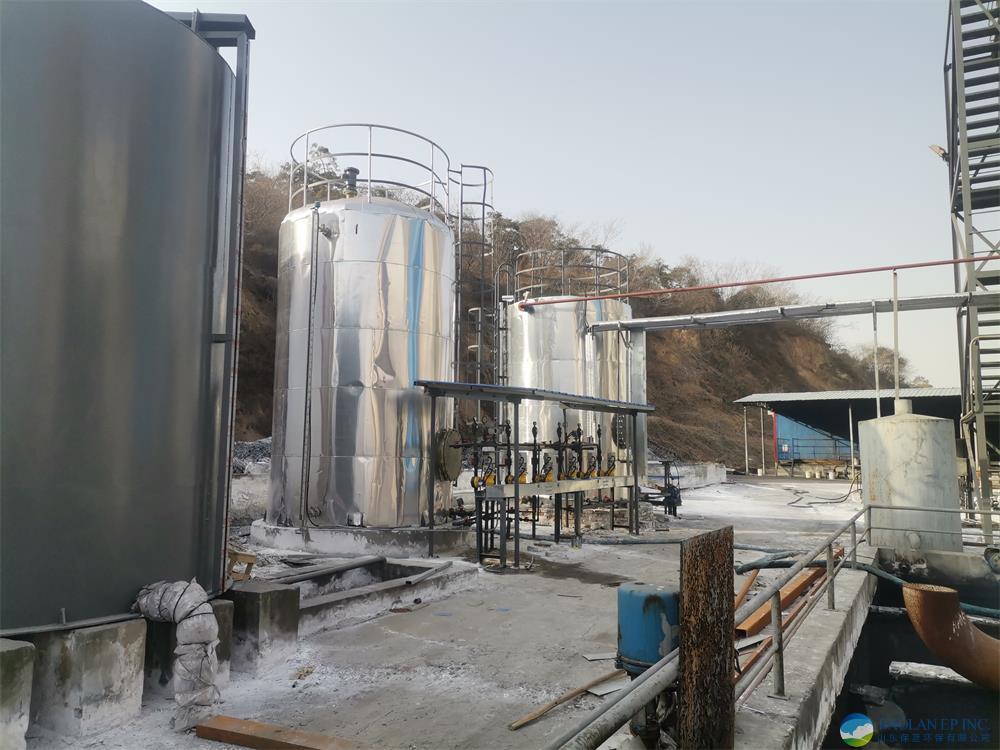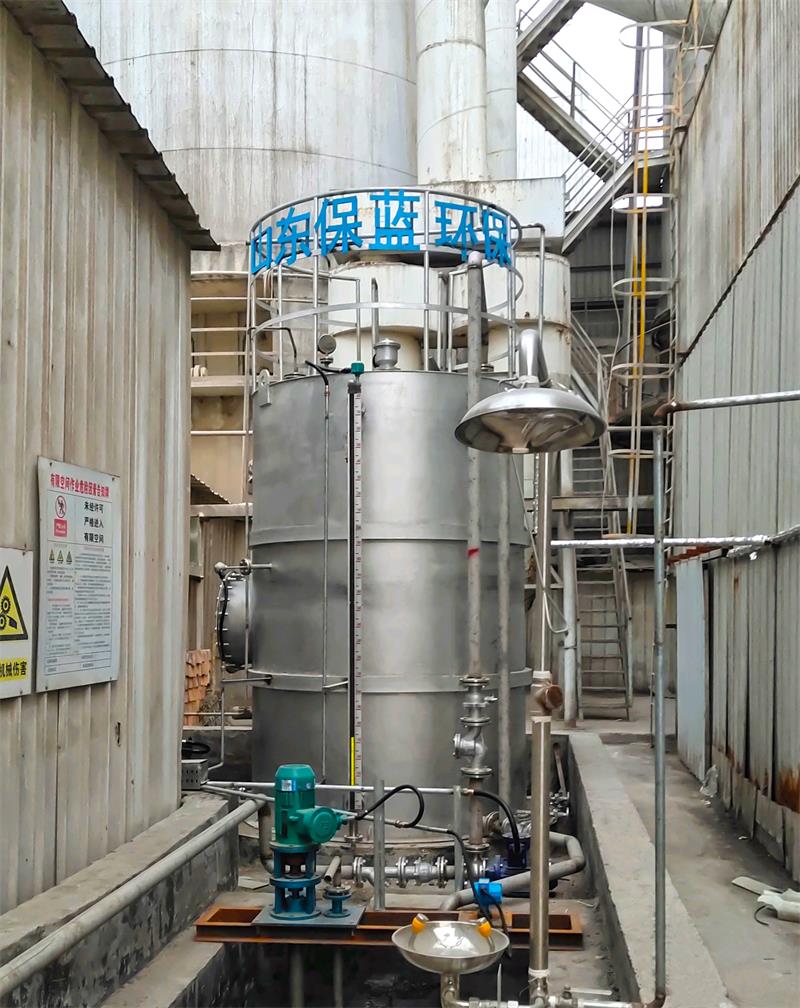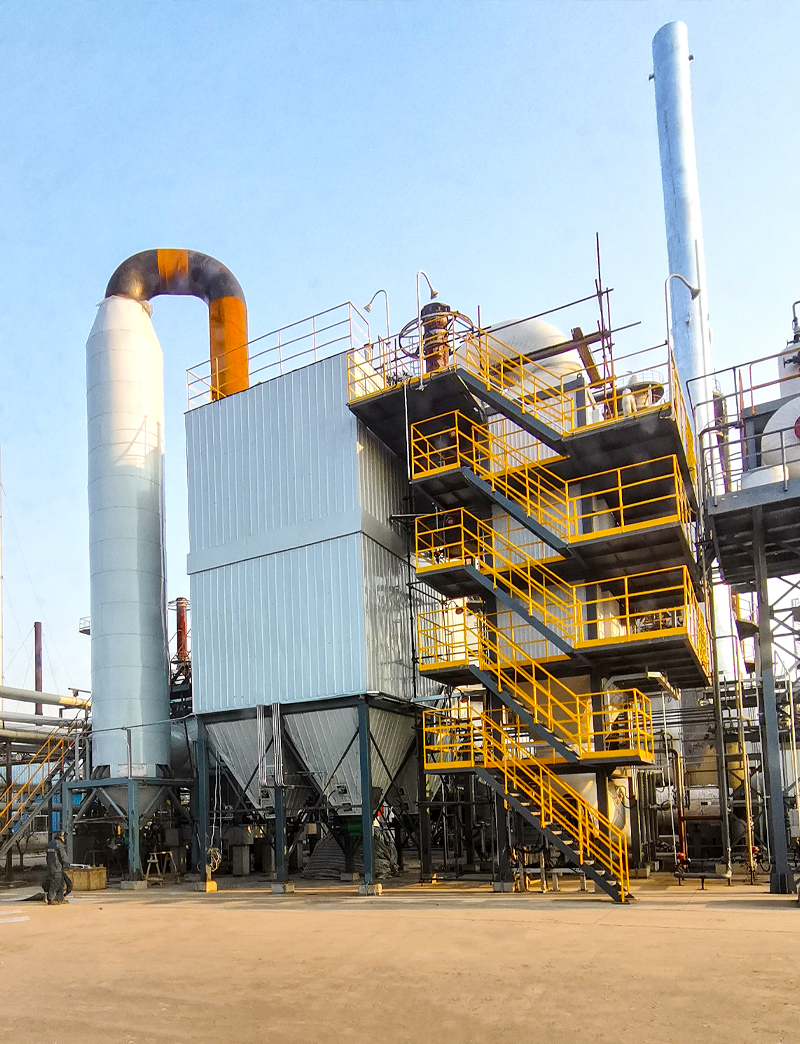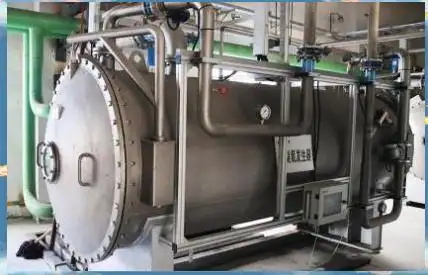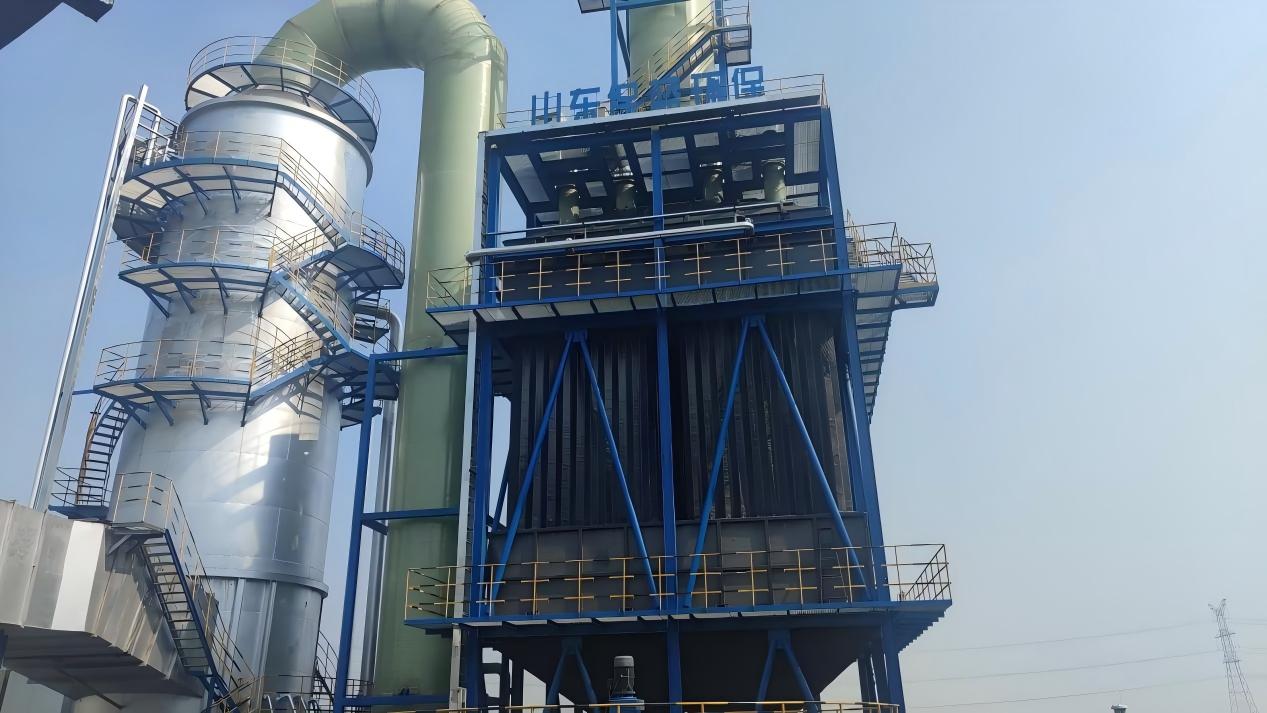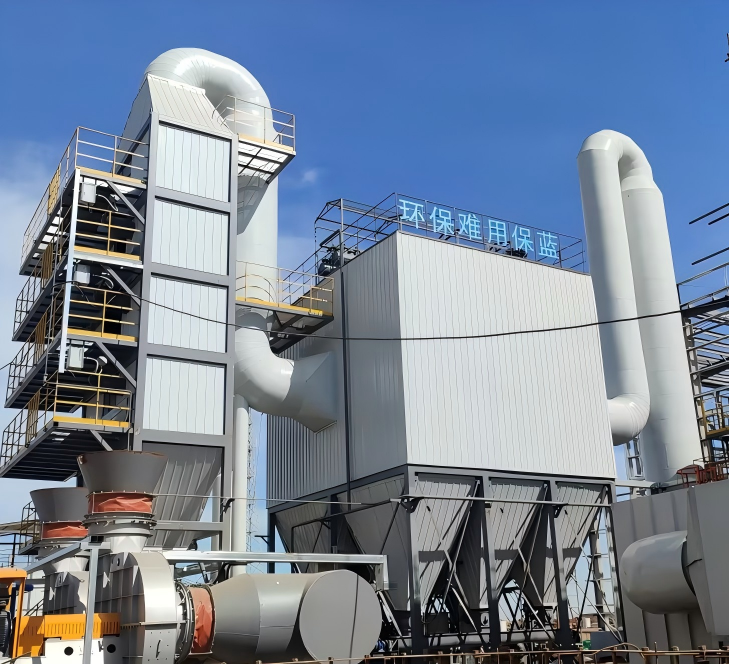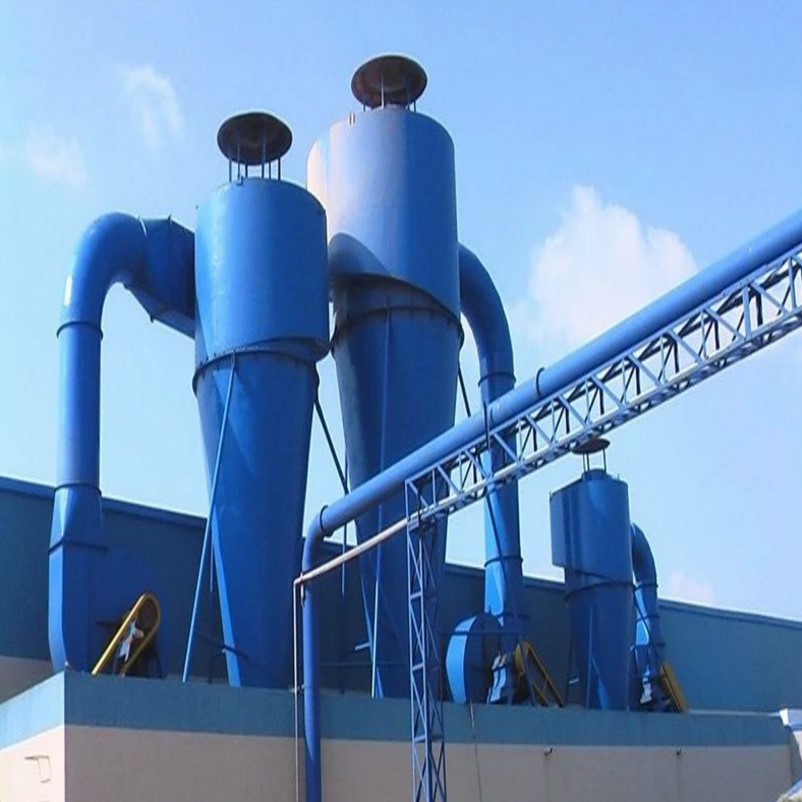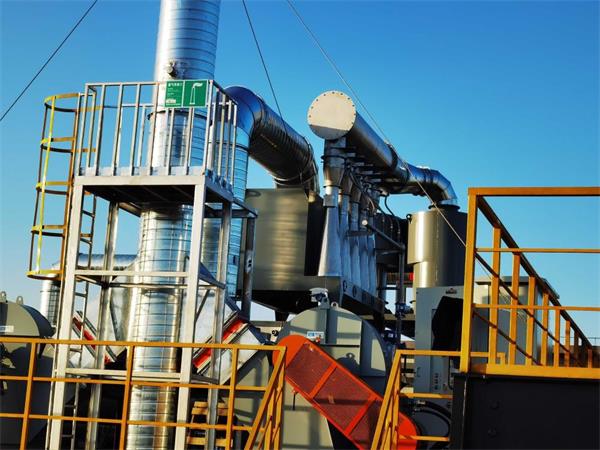- Incinerator
- Waste Gas Treatment
- Environmental Monitoring
- Product Details
Sodium Hypochlorite Denitrification
Technology Introduction
Sodium hypochlorite (NaClO) denitrification technology, commonly known as NaClO oxidation and absorption method, is a highly effective treatment technology for medium and high concentration nitrogen oxides (NOx), especially good at treating nitric oxide (NO), which is difficult to be directly absorbed by lye.
Its core principle can be summarized as follows: using the strong oxidation of sodium hypochlorite, NO insoluble in water is oxidized into high-valence nitrogen oxides that are easily absorbed by lye, and then absorbed through the alkali absorption tower, and finally converted into harmless nitrate and nitrite.
Working Principle
1.Oxidation stage (key step)
NOx in exhaust gas is mainly composed of NO (more than 90%) and NO₂. NO is extremely insoluble in water and has a very low efficiency (usually < 20%) when absorbed directly by lye (e.g., NaOH). Therefore, NO must be oxidized first.
Sodium hypochlorite (NaClO) is hydrolyzed in aqueous solution to form hypochlorous acid (HClO):
NaClO + H₂O ⇌ NaOH + HClO
NaClO + H₂O ⇌ NaOH + HClO
Hypochlorous acid (HClO) is a strong oxidizing agent that can rapidly oxidize insoluble NO into soluble NO₂ or higher nitrogen oxides (such as N₂O₅, HNO₃, etc.).
Main oxidation reactions:
2NO + HClO + H₂O → 2HNO₂ + HCl (nitrite)
NO + HClO → NO₂ + HCl
Further oxidation:
The resulting NO₂ and HNO₂ continue to be oxidized:
HNO₂ + HClO → HNO₃ + HCl (Nitric Acid)
2NO₂ + HClO + H₂O → 2HNO₃ + HCl
Summary of the oxidation stage: NaClO solution contacts the NO in the flue gas through spraying, and uses its strong oxidation (active ingredient HClO) to finally oxidize NO to form nitric acid (HNO₃) and a small amount of nitrite acid (HNO₂). This step breaks through the bottleneck of NO being insoluble in water and is the core of the entire technology.
2. Absorption stage
The acidic substances (HNO₃ and HNO₂) generated during the oxidation phase need to be neutralized and absorbed in time, otherwise the oxidation efficiency will be affected. Lye (most commonly NaOH sodium hydroxide) is usually used as an absorbent in the absorption tower.
Neutralizing Absorption Reactions:
HNO₃ + NaOH → NaNO₃ + H₂O (produces sodium nitrate)
HNO₂ + NaOH → NaNO₂ + H₂O (sodium nitrite is produced)
At the same time, a small amount of acidic gas such as SO₂ that may be present in the exhaust gas will also be absorbed by the lye:
SO₂ + 2NaOH → Na₂SO₃ + H₂O
SO₂ + 2NaOH → Na₂SO₃ + H₂O
Summary Absorption stage: The lye solution efficiently absorbs the acidic substances produced by oxidation, generates stable sodium salts (NaNO₃, NaNO₂, Na₂SO₃, etc.), and dissolves them in the absorbent solution, so as to achieve the complete removal of pollutants.
Systematic process flow
A typical sodium hypochlorite denitrification system mainly includes the following units:
1. Flue gas system: The exhaust gas is collected through the pipeline and sent to the treatment system by the draft fan.
2. Spray oxidation absorption tower: This is the core equipment. A multi-layer spray layer is set up in the tower, and the mixed solution of sodium hypochlorite and sodium hydroxide (or graded spraying) is atomized through the nozzle to make full counterflow contact with the exhaust gas entering from the bottom of the tower.
Contact process: In the tower, the gas and liquid phases are fully contacted, and the two processes of oxidation and absorption are completed at the same time.
3. Mist eliminator: Located on top of the absorption tower, it removes the entrained droplets in the purified gas, ensuring the normal operation of the rear end fan and chimney.
4. Circulating liquid system: including circulation pump, circulating water tank (or tower kettle). The absorbent is circulated in the tower, and the concentration of sodium nitrate and nitrite in the solution increases as the reaction progresses.
5. Drainage and treatment: When the salt concentration in the circulating liquid reaches a certain value, part of the waste liquid needs to be discharged regularly and fresh agents (NaClO and NaOH) are supplemented. The effluent is sent to the sewage treatment system for further treatment (usually biochemically).
Technical Advantages
1. High denitrification efficiency: The removal rate of NOx can usually reach more than 90%, especially suitable for treating medium and high concentration of exhaust gas with NO concentration of 100-1000 mg/m³.
2. Fast reaction speed: The oxidation reaction is rapid, and the system starts and responds quickly.
3. Collaborative removal of multiple pollutants: While denitrification, it can effectively remove SO₂, H₂S, some VOCs (easily oxidized) and odorous gases, and achieve coordinated control of multiple pollutants.
4. The system is relatively simple: the main equipment is the spray tower, which occupies a relatively small area and is easy to operate and maintain.
Application Areas
This technology is widely used in industries that require efficient denitrification with moderate exhaust gas concentrations:
Chemical industry: nitric acid, fertilizer, adipic acid, nitrocellulose, metal pickling and other production exhaust gases.
Waste incineration and power generation: waste incinerator flue fumes.
Industrial kilns: ceramic kilns, glass furnaces, cement kilns, etc.
Spraying industry: dryer exhaust gas generated by automobile spraying, furniture spraying, etc.
Sewage treatment plants, composting plants: for deodorization and denitrification.


